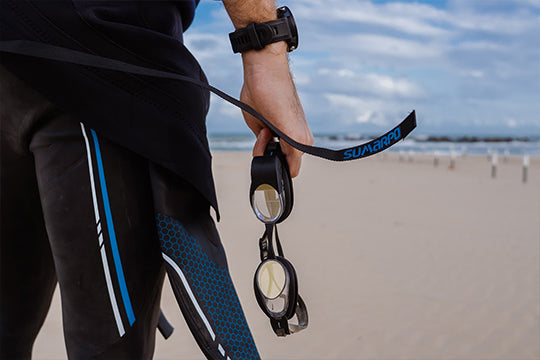Whether you're heading to the pool, the ocean, or a triathlon, choosing the right gear can significantly impact your comfort and performance. Among the popular options are swimsuits, wetsuits, and neoprene swimsuits. Let’s break down their differences, when to use each, and how they work together.
Which Option is Best for You?
Swimsuit: Best for pool swimming, warm-weather recreational use, and indoor training.
Wetsuit: Ideal for cold water, prolonged exposure, or high-performance needs in open water.
Neoprene Swimsuit: Perfect for transitional conditions, where you need extra warmth and buoyancy without the bulk of a full wetsuit.
1. Design and Coverage
Neoprene Swimsuit:
Designed to look like a traditional swimsuit but made from neoprene.
Sleeveless with minimal coverage, often resembling a one-piece suit.
Focuses on maximizing hydrodynamics and flexibility for competitive swimming or triathlons.
Springsuit:
A short wetsuit with short sleeves and legs, providing more coverage than a neoprene swimsuit.
Protects the upper arms and thighs, offering extra warmth and coverage.
Typically zips at the back for easier donning and doffing.
2. Intended Use
Neoprene Swimsuit:
Built for speed in triathlons, open-water swimming, or training in mild water temperatures.
Prioritizes flexibility and buoyancy over insulation.
Springsuit:
Designed for water sports like surfing, snorkeling, or casual swimming in slightly cooler water.
Focuses more on keeping the torso warm while allowing freedom of movement for various sports.
3. Buoyancy and Hydrodynamics
Neoprene Swimsuit:
Provides mild buoyancy and enhances body position in the water, reducing drag for faster swimming.
Springsuit:
Offers moderate buoyancy but less focus on optimizing swim speed and body alignment.
4. Water Temperature Suitability
Neoprene Swimsuit:
Ideal for warm to mild water conditions where insulation isn’t the primary concern.
Springsuit:
Suitable for slightly cooler water due to additional coverage on arms and legs.
5. Purpose in Competitive vs. Recreational Use
Neoprene Swimsuit:
Specifically designed for competitive swimmers and triathletes.
Enhances performance through minimal drag and quick transitions.
Springsuit:
A versatile option for recreational activities or water sports, emphasizing comfort and light warmth over performance.
Key Comparison Table
|
Feature |
Neoprene Swimsuit |
Springsuit |
|
Coverage |
Sleeveless, minimal leg coverage |
Short sleeves, short leg coverage |
|
Primary Use |
Competitive swimming, triathlons |
Recreational water sports, snorkeling |
|
Focus |
Hydrodynamics, speed, and flexibility |
Warmth and light coverage |
|
Water Temperature |
Warm to mild |
Mild to slightly cool |
|
Buoyancy |
Light buoyancy |
Moderate buoyancy |
|
Price Range |
Slightly higher for performance gear |
Generally affordable |
Quick Comparison Table
|
Feature |
Neoprene Swimsuit |
Common Wetsuit |
|
Thickness |
1-2mm |
3-7mm |
|
Coverage |
Short (arms and legs) |
Full-body |
|
Buoyancy |
Mild |
High |
|
Primary Use |
Triathlons, warm waters |
Diving, cold waters |
|
Weight |
Lightweight |
Heavier |
|
Hydrodynamics |
High, reduces drag |
Moderate |
|
Ease of Use |
Easy to wear/remove |
More effort needed |



















